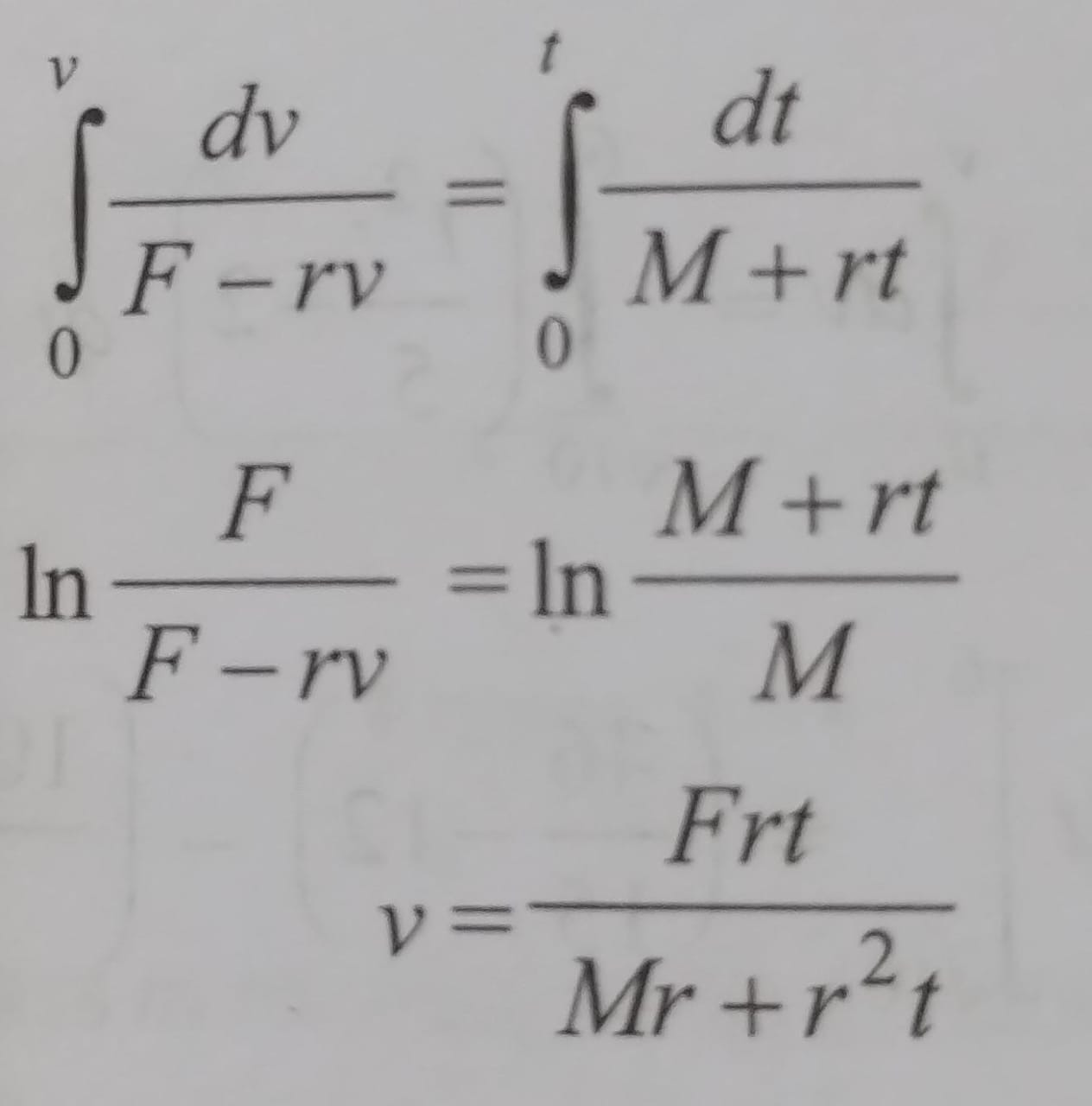Question
Question: $\int_{0}^{v}\frac{dv}{F-rv} = \int_{0}^{t}\frac{dt}{M+rt}$...
∫0vF−rvdv=∫0tM+rtdt

The final expression for v is: v=rM+r2tFrt
Solution
The problem provides a derivation starting from an integral equation and ending with an expression for v. The task is to present the solution, which involves verifying and explaining these steps.
The given integral equation is: ∫0vF−rvdv=∫0tM+rtdt
Explanation of the Solution
-
Integrate the Left-Hand Side (LHS): Let u=F−rv. Then, du=−rdv, which implies dv=−r1du. The limits of integration change: when v=0, u=F; when v=v, u=F−rv. LHS=∫FF−rvu1(−r1)du=−r1[ln∣u∣]FF−rv =−r1(ln∣F−rv∣−ln∣F∣)=r1(ln∣F∣−ln∣F−rv∣) Assuming F>0 and F−rv>0 (typical for physical scenarios where v is less than terminal velocity): LHS=r1ln(F−rvF)
-
Integrate the Right-Hand Side (RHS): Let w=M+rt. Then, dw=rdt, which implies dt=r1dw. The limits of integration change: when t=0, w=M; when t=t, w=M+rt. RHS=∫MM+rtw1(r1)dw=r1[ln∣w∣]MM+rt =r1(ln∣M+rt∣−ln∣M∣) Assuming M>0 and M+rt>0 (which is true for positive mass and time): RHS=r1ln(MM+rt)
-
Equate and Simplify: Equating the integrated LHS and RHS: r1ln(F−rvF)=r1ln(MM+rt) Multiplying both sides by r: ln(F−rvF)=ln(MM+rt) This matches the second line of the provided derivation.
-
Solve for v: Exponentiate both sides (take e to the power of both sides) to remove the logarithms: eln(F−rvF)=eln(MM+rt) F−rvF=MM+rt Cross-multiply: F⋅M=(F−rv)(M+rt) Expand the right side: FM=FM+Frt−rvM−r2vt Subtract FM from both sides: 0=Frt−rvM−r2vt Rearrange the terms to solve for v: rvM+r2vt=Frt Factor out v from the terms on the left: v(rM+r2t)=Frt Finally, solve for v: v=rM+r2tFrt This matches the third line of the provided derivation.
